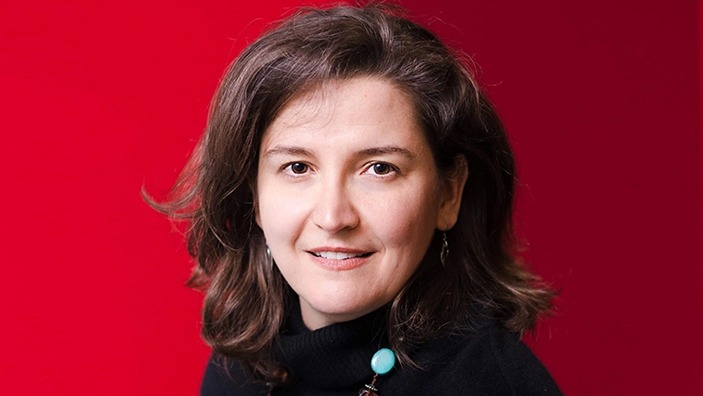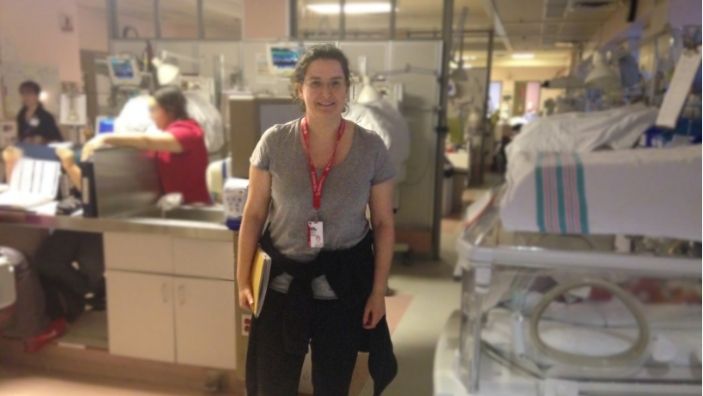Experienced professionals tend to believe they do things the right way. That holds true for specialists in the same field but in different units or organisations. Such groups or entities may come together through mergers or other types of restructurings such as a transfer of employees between business units. So how can they reconcile different approaches with those of other well-meaning, experienced peers from other professional entities?
With great difficulty. At least that’s the short answer.
Karla Sayegh, Assistant Professor in Organisational Theory and Information Systems at Cambridge Judge Business School, devoted 2 years of field research at 2 merging university hospitals in Montreal, Canada, to come up with a more detailed answer, developing a model with distinct pathways that lay out the mechanisms involved in reconciling work practice differences – or not. These findings have implications for many types of organisations that merge or restructure their own departments, divisions or groups. Karla’s research looks at the tension that can arise when groups from the same profession whose work practices have evolved separately are brought together, and how this affects work outcomes.


Merging hospital units for babies needing intensive care
The research involves the merger of the Neonatal Intensive Care Units (NICUs) of 2 major Canadian teaching hospitals, so it focuses on an especially crucial area – care for vulnerable newborns, many of them born extremely prematurely (as early as 23 weeks rather than the full term of 40 weeks) or requiring surgical intervention due to serious conditions such as neurological defects, organ malformation or life-threatening infections that require continuous monitoring and immediate intervention through appropriate expertise.
“The hospital provided a great setting to examine how resolving expert work differences happens in practice – even though this challenge applies to most organisations facing new partnerships, mergers or other forms of restructuring,” says Karla, whose research was published in the leading journal Organization Science. “The study is really all about struggles over expert knowledge, and in hospitals, the stakes are very high – lives are on the line, particularly in intensive-care settings like the one we studied. So variations in how experts practice on the same type of very sick baby can have life and death implications. If we understand how to reconcile expert practice differences in pressure-cooker environments, there are lessons to be learned for any transformation or change in knowledge work.
“Another reason why this hospital setting was ideal for studying this issue of differing practices is because this was not about difficult or unduly stubborn knowledge workers. The nurses from both merging neonatal care units have great expertise and have been practicing for a long period of time with a superb record of dealing with babies needing critical care. So it’s completely understandable for them to say: ‘I believe that this is the right way to do it. Babies haven’t died under my watch. And now you want me to change this? Really?’”
You want to teach me what I already know?! Seriously?
Agreement on knowledge type is key to post-merger harmony
The research looks at abstract knowledge (based on scientific evidence) versus experiential knowledge (based on individuals’ own work experience). It finds that, when groups from the same profession are brought together through a merger and can converge on which of the two knowledge types should guide expert practices, reconciliation between competing practices is possible; when they diverge on the relevant knowledge type, reconciliation is not possible.
“We suggest that reconciliation efforts are tense and conflictual, involving struggles over what and whose knowledge comes to matter,” says the research. “Our model shows that expert practice reconciliation can proceed along 3 distinct pathways depending on whether there is consensus among central actors about the type of knowledge – abstract or experiential – that is suitable to support the practice.
“Our study highlights the challenges of changing expert practices that are rooted in ingrained experiential knowledge. It reveals that abstract knowledge alone is insufficient, and that reconciliation invariably involves settlements and agreements on what form of knowledge matters.”
The appeal of a hospital study
Karla says she was drawn to the hospital study because it presented a deeply human example of the type of how-professionals-interact research she has long pursued:
“I study collaboration among professionals with deep expertise, and there’s nothing more gratifying to see how they work together to keep babies alive. There is a sense of purpose in a hospital neonatal unit that is different from what you feel with knowledge work in more traditional office spaces.
“One thing that really sticks with me from this research is that the head neonatologist was this incredible, down-to-earth woman. When the neonatal units merged they moved to a new building, and she was working with all the nurses in moving babies around. She worked at ground level: there was no power difference between her and the most junior of nurses.”
“I study collaboration among professionals with deep expertise, and there’s nothing more gratifying to see how they work together to keep babies alive. There is a sense of purpose in a hospital neonatal unit that is different from what you feel with knowledge work in more traditional office spaces.
3 ways to resolve post-merger differences at work
Karla and her co-authors noted that there was very limited literature on the bringing together of expert practices that emerged in different settings for the same tasks. So they examined previous studies on other forms of expert practice change, and identified 3 theories that point to pathways toward reconciliation:
knowledge updating, in which actors invoke scientific evidence and best practice to guide the performance of a new practice
authoritative imposition, where managers or other supervisors act to directly reconcile differing expert practices
relational accommodation, which involves negotiations among expert groups themselves
1
Authoritative imposition
Where managers or other supervisors act to directly reconcile differing expert practices.
Prior research on authoritative imposition found that the use of authority to change expert practice may succeed if experts deem such authority as legitimate to their domains, agree with its commands and comply with such directives. “However, these conditions constitute a rather tall order, particularly when taken together,” says Karla’s research, as such imposed authority can be seen as encroaching on expert autonomy by experienced professionals who may dig their feet in to justify their longstanding practices.
A 2014 study offered a potential way forward: it looked at how managers at a university exercised authority to standardise safety practices across dispersed labs and specialists by emphasising the demands of an outside actor – in this case the US Environmental Protection Agency. But Karla and her co-authors say they are sceptical that this approach can work widely, noting that in the university case outside censure “essentially shamed the specialists into (reluctantly) codifying their own expertise in ways that eliminated variety, ambiguity and the situated judgments that had made their expertise valuable”.
2
Relational accommodation
Involves negotiations among expert groups themselves.
Such accommodation generally occurs through informal patterns of repeated social interaction with peers and other co-workers in which experts adapt practices together through shared experience and jointly respond to everyday issues.
A 2012 study looked at a merger between 2 law firms, in Germany and the UK, in which different ways of working in the same legal practice groups created tension and what the authors term small crises. These issues were relieved through hybrid practices after lawyers from both sides realised that such disagreement between lawyers from the same merged firm was not inspiring confidence among clients. “The study shows that conflict as well as influential audiences who challenge differences (such as clients) appear to be crucial to enabling reconciliation through relational accommodation between occupational subgroups,” Karla writes.
Yet absent such intervention by a crucial audience (clients in this case), research has shown that such relational accommodation alone may not lead to adjustments in work practices by professionals who believe strongly in their longstanding work approaches.
3
Knowledge updating
Actors invoke scientific evidence and best practice to guide the performance of a new practice.
While members of the skilled professions may share basic knowledge necessary to obtain regulated credentials, organisations also identify best practices designed to update the basic knowledge underlying a sector of work. “By linking work practice to updated knowledge that is thought to be scientific, which is to say more reliable, objective, and less variable than other forms of knowledge or belief, the practice becomes more credible.”
Yet even when such best practices have clear scientific validity, experts may defend their experiential knowledge in order to preserve their current ways of working. “Attempts to align situated practices to an evidence-based guideline can stall because the abstract and universal nature of evidence may not be perceived as capturing the needs of complex cases or may challenge the status and autonomy of occupational subgroups. In such situations, actors may defend the experiential knowledge underlying their ways of working to preserve them. Alternatively, actors may attach themselves to evidence not for its epistemological value but to legitimise their practices or negotiate positions.”
Despite drawing lessons from previous studies on different forms of expert practice change, Karla’s research found that the 3 mechanisms – authoritative imposition, relational accommodation, and knowledge updating – “all appear insufficient on their own to explain how the practices of expert groups that have evolved separately might be reconciled when they are brought together.”
t is conceivable that all 3 mechanisms might reconcile practice differences among junior members of a professor eager to learn and advance, the research says, but for more obstinate experts who are heavily invested in their practices such efforts at reconciliation via each of the 3 mechanisms alone will likely be met with resistance.
So the research asked this question “How might expert practices that have evolved separately in different settings be challenged, preserved, or reconciled when groups from the same occupation are brought together?”
From ventilator use to bathing: studying mergers across hospitals highlights star differences
The study took advantage of the fact that the government in Montreal had approved the merger of the 2 hospitals as part of a province-wide health consolidation in Quebec, so Karla’s fieldwork took place in the period 7 months before and 17 months after the hospital merger, focusing on the NICUDs and involving observation, shadowing, formal interviews and other informal conversations, along with archival material.
“It’s not every day that hospitals merge,” says Karla. “They are highly regulated, and systems don’t adapt or change easily at a systems level, even though at an individual level people innovate and don’t hesitate to try new things. So the fact that the government had chosen to merge these hospitals provided a really great opportunity to examine these issues.”
While all NICU nurses at the 2 hospitals had the same formal knowledge, their practical experience was very different. Nurses from one of the hospitals (referred in the study as GEN) focused on ensuring premature babies followed a growth trajectory through temperature regulation and ventilatory support, while nurses from the other hospital (referred to as KIDS) focused on rapid airway manipulation for immediate respiratory support and stabilisation in case of sudden deterioration. In practical terms, this meant that KIDS nurses were less concerned about temperature regulation and worked with the incubator lid open, while GEN nurses worked through portholes to change diapers and perform other care tasks in order to ensure a steady temperature.
KIDS and GEN nurses also differed on bathing schedules for newborns. As one KIDS nurse told the researchers: “We would do our baths every second day, and they would do it every third day. So when we would write out our care plan for the day we would write “bath every second day”, and then I would give the report to a GEN nurse and they would erase it and write every third day.”
“Because their distinct ways of working had sedimented over the years and each subgroup was invested in its own practices, both eventually agreed, implicitly, to preserve their own ways of working – even when they viewed the others’ practices as inferior,” says the research.
3 solutions to help reconcile differing approaches between groups post-merger
Lorem ipsum dolor sit amet, consectetur adipiscing elit, sed do eiusmod tempor incididunt ut labore et dolore magna aliqua. Ut enim ad minim veniam, quis nostrud exercitation ullamco laboris nisi ut aliquip ex ea commodo consequat. Duis aute irure dolor in reprehenderit in voluptate velit esse cillum dolore eu fugiat nulla pariatur. Excepteur sint occaecat cupidatat non proident, sunt in culpa qui officia deserunt mollit anim id est laborum.
1
Mobilising abstract knowledge
Mobilising abstract knowledge in the form of scientific evidence as a basis for a new shared practice, sometimes through enlisting high-status professionals to re-inforce the evidence and exert social pressure on subgroups. “However, evidence is insufficient on its own to induce convergence on a consistent way of working as it challenges the established experiential knowledge of subgroups and often proves inadequate for complex situations.”
2
Mobilising experiential knowledge
Mobilising experiential knowledge when abstract knowledge cannot be found to support one way of working over another. “This can help preserve the autonomy of subgroups because such knowledge underpins how they perform their practices”, yet such reconciliation can in some ways be merely symbolic as practice differences “can be legitimised by appealing to critical thinking and judgment based in experiential knowledge”.
3
Diverging on knowledge relevance
Diverging on the appropriateness and relevance of abstract knowledge to a practice. This divergence can be shaped by the prior experiences of specific subgroups with a particular evidence-based practice. “This third pathway is when 2 managers cannot agree on the type of knowledge that works on a practice, and nothing really happens as one group remains defiant and continue to practice their own way,” says Karla.
Changing expert behaviour through progressive social pressure
“We suggest that the full practice reconciliation pathway may require a progressively intensifying pattern of social pressure to compel experts to adopt a new way of working,” say Karla and her co-authors, from HEC Montreal and the Desautels Faculty of Management at McGill University in Montreal.
“This begins with the persistent use of scientific rhetoric to promote updated abstract knowledge as objective and neutral. When evidence is unsuccessful at changing expert practice, more pressure is applied via situated mentoring: mandated, yet collaborative co-performance of the abstract knowledge with respected mentors. Finally, if situated mentoring is unsuccessful, authoritative reinforcing involving high-status professionals and more coercive reinforcement approaches is likely to change expert practice.”
Forcing experts to change their ways is unlikely to succeed, so the authors instead suggest a “deliberate, carefully orchestrated process that progressively applies increasing social pressure but allows for the early opportunity to engage voluntarily and collaboratively with reconciliation efforts”.
We suggest that the full practice reconciliation pathway may require a progressively intensifying pattern of social pressure to compel experts to adopt a new way of working,
New hires can help resolve tensions after a merger
An earlier version of Karla’s research, which won 2 top awards from the Academy of Management, identified how new less experienced hires can prompt an organisational imperative to resolve tensions between experienced professionals – by observing differences and raising the issue to those responsible for their training. In the merged hospital setting, such novice nurses became concerned that care for newborn babies could be compromised by conflicting approaches.
“They (the novices) observed differences and did not know who to follow,” says Karla’s research. “They worried that the wrong choice could have grave consequences. According to one novice, ‘It’s confusing being new because (senior) nurses have different styles … It’s a bit scary because one way or another can impact the baby; they are so fragile.”
The role that newcomers can play in triggering the reconciliation of differences was a surprising but important finding: given their inexperience and relatively rudimentary knowledge, the novice nurses were puzzled and challenged by the differing approaches, and this prompted them to seek guidance that could clarify the proper approach. Because they were junior, such novices tended not to cause senior nurses to feel threatened personally by such questions, and that was helpful in finding solutions.
“It is precisely because of their weakness in terms of experiential knowledge (and not because they possess additional competences or different values) that they become influential in triggering efforts aimed at practice reconciliation,” says the study. “Future research should consider what other circumstances might place apparently weaker members of an occupation in a position where they could influence practice.”
Practice alignment hinges on whose knowledge matters most
Karla believes that the study’s findings can be transferred more readily to other settings and conditions when the people involved come from occupational subgroups of equal status and who enjoy autonomy based on their experiential knowledge. For less autonomous subgroups, their expertise may be easier to reshape through standardisation and thus they would be more receptive to practice reconciliation efforts.
“Reconciling practices differences involves a conflictual and contingent process over what and whose knowledge comes to matter,” the research concludes. “Multiple mechanisms that apply increasing forms of social pressure to ‘undo’ the experiential knowledge of experts might be needed for experts to converge on a shared way of working based on updated abstract knowledge.
“When groups cannot agree on what type of knowledge should underpin a practice, however, reconciliation fails.”
Featured faculty
Karla Sayegh
Assistant Professor in Organisational Theory and Information Systems
Featured research
Sayegh, K., Langley, A. and Faraj, S. (2025) “Unsettling settled knowing: reconciling differences in expert practice.” Organization Science
Huising, R. (2014) “The erosion of expert control through censure episodes” Organization Science
Smets, M., Morris, T., and Greenwood, R. (2012) “From practice to field: A multilevel model of practice-driven institutional change” Academy of Management Journal




